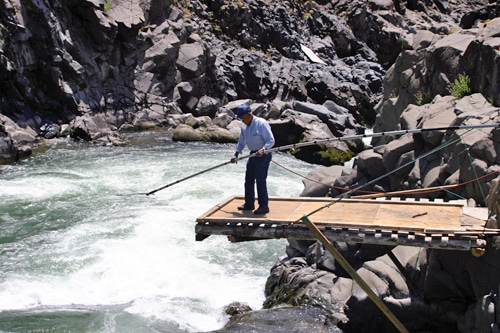BLOG / BLOG POST

Indigenous communities are once again paying as conservation groups continue to get paid
By Michael Roberts
Michael Roberts, a member of the Tlingit Nation, is the president and CEO of First Nations Development Institute. First Nations works to strengthen American Indian economies to support healthy Native communities. This blog post was written in accordance with International Day of the World’s Indigenous People and to call for economic policy changes to the way conservation and environmental movements are being funded.
In the recent Vox article “Indigenous people are the world’s biggest conservationists, but they rarely get credit for it” we are once again reminded of the now indisputable fact that the best stewards of the land are the people who have been inhabiting their ancestral homelands for thousands of years. Also, Western science repeatedly has found that the world’s biodiversity is best protected and preserved in the areas inhabited by Indigenous peoples.
Yet when we take a closer look at who actually gets paid for conservation, and equally as important — who pays — it is not lost on us as Indigenous people that “conservation” is by and for white Europeans, and they and their allies in private philanthropy continue to keep an iron grip on its funding.

As for who ultimately pays, Mark Dowie in his book “Conservation Refugees” notes that from the very beginning, the cost of conservation in the United States and around the world has been borne by Indigenous peoples in the form of land and resource loss, as well as the resulting loss of physical and spiritual health.
At First Nations Development Institute, we have spent the past 40 years working with Native communities throughout the United States to preserve and utilize their assets. Our Stewarding Native Lands work is targeted directly at helping these communities economically sustain themselves through the ecological stewardship Native peoples are doing – work on the climate change crises – that has benefits reaching beyond Native communities and reservation boundaries.
One of the benefits that comes with our 40 years of experience in racial and economic justice work, is that you can quickly draw parallels. In the case of conservation, there is a growing phenomenon between the work of large conservation nonprofits and for-profit predatory lenders.
In our documentation of predatory lending practices, First Nations note the frequency of these lenders setting up shop on the borders of Indian Reservations, extracting huge amounts of benefits and wealth from the Native communities, and generating little to none in terms of economic return.
Today a similar phenomenon is taking place. Capitalizing on the dire warnings of climate change, large conservation nonprofits are seemingly creating more and more “partnerships” with Native communities. The actual dollars that flow to the Native communities, however, are not unlike the exchanges with the predatory lenders – little to none. At the same time, these non-Native conservation groups turn around and capitalize on these partnerships, garnering large amounts of funding from their private philanthropy partners and sharing stories of the Native communities’ work with their individual donors. Yet I can assure you that few of those dollars flow back to the Native communities actually doing the conservation and ecological preservation work.
In the First Nations report, “Growing Inequity: Large Foundation Giving to Native American Organizations and Causes” we note that philanthropic support for Native environmental projects at the time of the report was a paltry $6.25 million per year. We also know from the Politico report, “Environmental Groups’ Greatest Obstacle May Not Be Republican Opposition” that the 12 largest private philanthropic funders alone provide funding of more than $1.3 billion annually, and only a small portion – 1.3 percent – finds its way to environmental justice and BIPOC- controlled organizations.
The time is long overdue when the folks doing the conservation should be getting paid for it. And we at First Nations believe that the logical vehicle to do so is our newly created Tribal Lands Conservation Fund. The Tribal Lands Conservation Fund will place Indigenous worldviews and practices at the center of stewardship efforts across the U.S. and support Native leaders at the forefront of tribal environmental justice. Native knowledge has always been key to preserving land and biodiversity across the globe. Now is the time that we honor, uplift and actively support these practices that may save the planet for us all.


For more information about the First Nations Development Institute visit firstnations.org and follow on Twitter @FNDI303.
